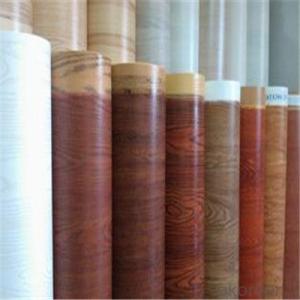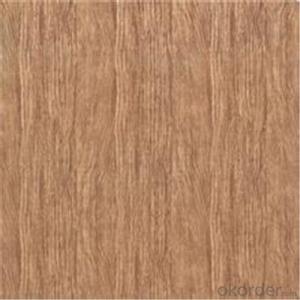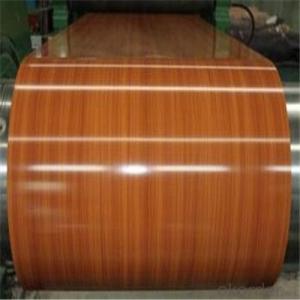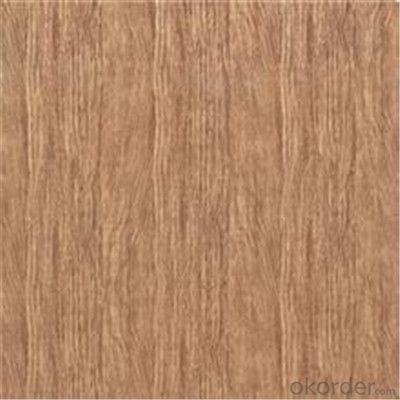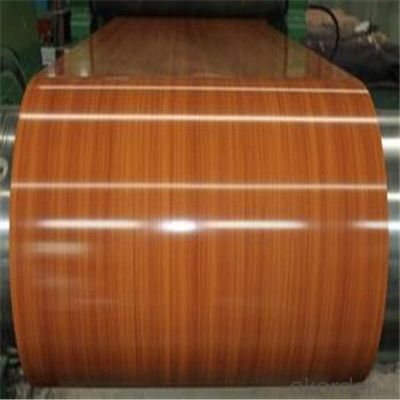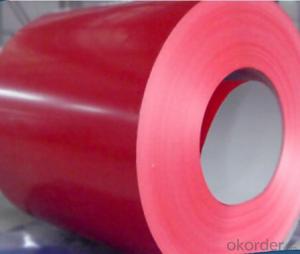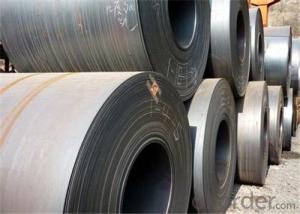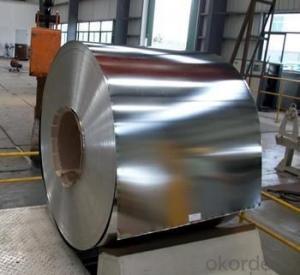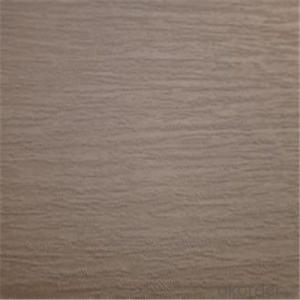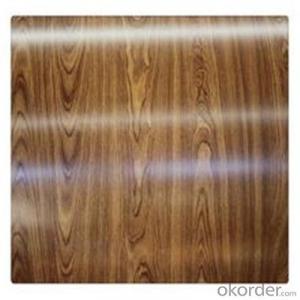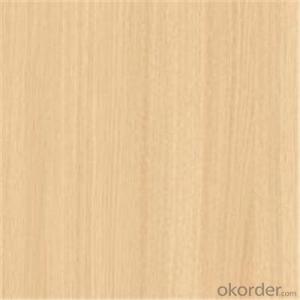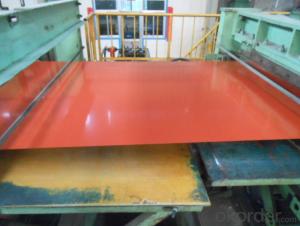Wood Pattern Printed Galvanized PPGL Steel Coil
- Loading Port:
- Shanghai
- Payment Terms:
- TT OR LC
- Min Order Qty:
- 55 m.t.
- Supply Capability:
- 1200000 m.t./month
OKorder Service Pledge
OKorder Financial Service
You Might Also Like
Specification
Description of Glove:
1. Environment friendly
2. Lower cost and maintenance
3. Long using time up to 10 years
4. Fast construction, time saving and labor saving
5. Easy cleaning
6. Antistatic
Festures of Glove:
Building industry | Outdoor application | Roof, structural balcony, panels, window sills, window frames, gates, garage doors, rolling doors, booths, shutters, watch rooms, makeshift houses, street waiting room (booth), refrigerators, etc. |
Indoor application | Room doors, dividing walls, door frames, light house steel structures, sliding doors, screens, ceilings, toilets, interior elevator lobby, stairwayventilating duct, communication pipelines. |
Specifications of Glove:
Standard packing to export:
1) 4 eye bands and 4 circumferential bands in steel
2) Galvanized metal fluted rings on inner and outer edges
3) Galvanized metal & waterproof paper wall protection disk
4) Galvanized metal & waterproof paper around circumference
Images of Glove:
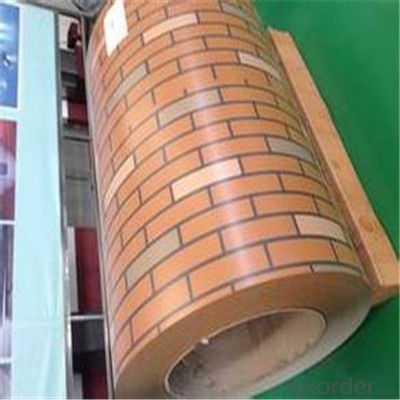
FAQ:
1.What about the delivery.
We can arrange the shipment about 15-25 days after the deposit.
2.What about payment term?
30% T/T deposit, balance against B/L copy.
Full T/T payment if quantity less than MOQ.
3.How much about MOQ?
Normally 100pcs,but small order is acceptable as well.
- Q: How are steel coils used in the production of storage shelves?
- Steel coils are an essential component in the production of storage shelves. These coils are typically made from carbon steel and undergo a series of processes to shape them into the desired form. The first step in using steel coils for storage shelves is to unroll and flatten the coil. This is done using a machine called a decoiler, which unwinds the coil and feeds it through a series of rollers to flatten the metal. Once the coil is flattened, it is ready for further processing. Next, the flattened steel is cut into specific lengths using a shearing machine or a saw. These cut pieces are then bent and shaped into the appropriate dimensions for the storage shelves. This bending process is typically done using a press brake or a roll former, which applies pressure to the metal to create the desired shape. Once the steel has been shaped into the proper dimensions, it is welded together to form the structure of the storage shelf. This welding process ensures that the shelves are strong and durable, capable of supporting heavy loads. After the welding is complete, the storage shelves may undergo additional processes such as surface treatment or coating to enhance their appearance and protect them from corrosion. These treatments can include processes like powder coating, galvanization, or painting. Overall, steel coils play a crucial role in the production of storage shelves. They provide the raw material from which the shelves are made, and their versatility allows for a wide range of shapes and sizes to be created. The strength and durability of steel make it an ideal choice for storage shelves, ensuring that they can withstand heavy loads and provide long-lasting storage solutions.
- Q: i have a white spot on my stainless steel stove, its on the part behind the burners where the oven controls are, does anyone know what it may be and how to remove it. i have tried soap and water and stainless steel cleaner but neither worked. thanks!
- Baking soda mixed with liquid dish soap can make a good paste to gently rub on stains. Be sure to rinse the stainless steel surface thoroughly, and towel dry. If the stains still remain you can try vinegar. Remember to thoroughly rinse and towel dry. If stains still remain I recommend trying a stainless steel cleaner and polisher. Barkeeper's Friend is a good powder formula that can clean without scratching. Be sure to follow the directions, rinse thoroughly, and towel dry. These methods should help remove the discolorations
- Q: What are the different methods of tension leveling for steel coils?
- There are various techniques available for tension leveling steel coils, each with its own benefits and applications. 1. Roller leveling: By passing the steel coil through a series of rollers under high tension, strategically positioned to exert pressure on the coil, this method effectively stretches and elongates the coil. It is commonly used for thinner gauge coils and effectively eliminates defects such as coil set, crossbow, and edge wave. 2. Stretch leveling: This technique involves subjecting the steel coil to a combination of tension and elongation. The coil is held by clamps at both ends and then stretched using hydraulic or mechanical devices. This process helps remove residual stresses, flatten the coil, and enhance shape control. Stretch leveling is particularly suitable for thicker gauge coils, effectively eliminating wavy edges and center buckle. 3. Temper rolling: By passing the steel coil through a series of temper rolls that apply pressure on the surface, this method is primarily used to improve the surface finish and enhance the mechanical properties of the steel. It also helps reduce coil set and improve flatness. 4. Skin pass rolling: After the primary leveling process, the steel coil is passed through a series of rolls that apply light pressure on the surface. This technique is typically performed to further improve surface finish, enhance flatness, and reduce surface defects such as scratches or marks. 5. Stretcher leveling: This technique involves clamping the steel coil at both ends and applying tension to stretch it. The stretched coil is then held in this position for a specific duration to allow for stress relief and shape correction. It is commonly used for thicker gauge coils and effectively removes defects like coil set, crossbow, and center buckle. Each tension leveling method offers distinct advantages and is suitable for different types of steel coils and specific requirements. The choice of method depends on factors such as coil thickness, desired flatness, surface finish, and the specific defects that need to be corrected.
- Q: What are the different types of steel alloys used in coil production?
- There are various types of steel alloys used in coil production, including carbon steel, stainless steel, alloy steel, and tool steel.
- Q: i recently got an industrial piercing and instead of getting pierced with a metal bar i have a PTFE bar .. i eventually want to put in a metal bar but what kind do i get? whats the difference between a surgical steel and titanium bar?thanks
- 316L steel is the most basic metal used in body jewelry. It is the basic requirement of metal to be used in initial piercings and for healing. There are better grades but usually they cost more as well. For most people this grade of steel works just fine. Titanium is usually preferred over steel because it contains no nickel and it weighs almost 50% less than steel. Titanium can come in plain polish which looks just like steel AND it can come in a variety of colors (but NOT red or black). Titanium is super for people with sensitive skin to steel. It does cost a little more but is well worth it.
- Q: what is the densest type of steel ? what is its density ?what is its tensile strength .
- Technically, any metal that is not pure could be considered a steel alloy with the addition of iron. Density will vary depending on the percentage of each alloying element. In commonly available alloys, those with a high percentage of nickel will be the most dense. Nickel has a high molecular weight and readily alloys with most other metals. This class of materials is stainless steels, heat resistant super alloys such as inconel, hastalloy, etc. Tensile strength is not directly related to nickel content. Elements such as boron, manganese, molybdenum, and chromium have the most effect on tensile strength in steel alloys both as rolled and heat treated. Hope that answers your question.
- Q: What are the factors that determine the price of steel coils?
- There are several factors that determine the price of steel coils. 1. Raw material costs: The cost of raw materials, such as iron ore and coal, which are used in the production of steel, directly affect the price of steel coils. Any fluctuations in the prices of these raw materials can impact the final price of steel coils. 2. Energy costs: The energy required to produce steel coils, including electricity and fuel, is a significant factor in determining their price. Fluctuations in energy costs, such as changes in oil prices or electricity tariffs, can influence the overall price of steel coils. 3. Demand and supply: The demand and supply dynamics in the steel industry play a crucial role in determining the price of steel coils. When demand is high and supply is limited, prices tend to increase. Conversely, when demand is low and supply exceeds demand, prices tend to decrease. 4. Market conditions: The overall economic conditions and market trends can impact the price of steel coils. Factors such as economic growth, industrial production, and construction activities can influence the demand for steel and, consequently, its price. 5. Production and labor costs: The costs associated with steel coil production, including labor, equipment, maintenance, and transportation, contribute to the final price. Factors like labor wages, technological advancements, and production efficiency can influence these costs and, subsequently, the price of steel coils. 6. Trade policies and tariffs: Trade policies, including import and export tariffs, can affect the price of steel coils. Imposition of higher import tariffs can lead to an increase in domestic steel prices, while lower tariffs may result in lower prices due to increased competition from imports. 7. Currency exchange rates: Steel is a globally traded commodity, and fluctuations in currency exchange rates can impact its price. If the currency in which steel is priced strengthens against other currencies, it can result in higher prices for steel coils. It is important to note that these factors are interrelated and can vary depending on the specific market conditions, geographical location, and other external factors.
- Q: Obviously this is an easy question for anyone who works with metal. However, I am currently writing a book and had an idea that had to do with these two metals. Is it possible for gold to be folded into steel while it is being forged? Do 3-metal alloys exist? If this is not possible with current metal-working techniques and technology, what would be needed to make it possible? And finally, what exactly would the mixing of these two yield? A weak metal? A brittle metal? How would it compare to iron or gunmetal? If you have no idea, please offer speculations. Thank you!
- Well put it this way you cant gold steel but you can steel gold Kidding but seriously you can but ther would be no point the steel would be weaker and gold is expensive
- Q: Does steel have a valence number and if so, what is it?
- Steel is a mixture, so it doesn't have any valence number. On the other hand, all of the components of the steel mixture are in their elemental forms, so all the various valences are zero.
- Q: Is infi steel as good as busse knives make it sound. If so why don't any other brands use it. Also are there any tactical folders that use infi steel. If infi isn't as good as it's cracked up to be then what is the best alternative.
- infi is a brand name steel. They have it specially made and the composition is supposed to be a secret though it is similar to 52100. I have used knives from Busse and their sister company Swamprat Knives. Both companies make good knives, even if their advertising may be a bit odd. They are pricey, but are also very good knives with good steel and ergonomics. If you have the money they are a good option. I don't know if Swamprat still makes knives, but I have a 4'' folder from them in s30v that is great. Benchmade makes some great knives as well, though not nearly a custom as Busse. Take a look at the 913, a 3.6'' D2 blade that was a spring release and G10 handle for a good price. An excellent knife.
Send your message to us
Wood Pattern Printed Galvanized PPGL Steel Coil
- Loading Port:
- Shanghai
- Payment Terms:
- TT OR LC
- Min Order Qty:
- 55 m.t.
- Supply Capability:
- 1200000 m.t./month
OKorder Service Pledge
OKorder Financial Service
Similar products
Hot products
Hot Searches
Related keywords
